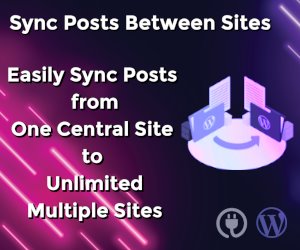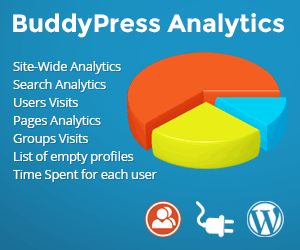How Page Speed Affects Your Google Ranking?

What is Page Speed?
Page Speed is the time period a web page takes to load. It’s based on many factors such as site’s host server, page file size, and image size. If you want to increase your sales, you need to make your site to load faster.
According to Google research, a 1 second delay in mobile load time could decrease conversion rates by 20%. Google Speed Update on July 2018 announced page speed as a ranking factor for searches on mobile devices. This update will impact web pages that provide slow experience to its visitors. Slow page load time can create a poor user experience, leading to lower numbers of visitors and a high bounce rate.
In this article, I’ll share a couple of tricks that will help your site load faster and increase traffic and search engine rankings.
We can further describe page speed in the following way:
Fully Loaded Page: It means how much time it takes for all the resources on a page to load.
Time to First Byte (TTFB): It’s the total period of time that it takes for a page to start the loading process.
First Meaningful Paint/First Contextual Paint: It’s the period of time a web page takes to load its first fold or an interactive section.
Let us understand the 3 terms with the aid of an example:
If you land on a web page and get a white screen for a couple seconds, that is Time to First Byte (TTFB).
A page requires 10 seconds to load fully however it can take only 1.5 sec to load its first fold. Therefore, though it can take 10 seconds for the page to load its resources, a visitor still has some thing to interact with after 1.5 seconds. So to this visitor, your page is fast.
Why Page Speed is essential for SEO?
A slow loading site can hurt your search engine rankings. An average mobile site takes 15 seconds to load and desktop site takes load time of about 8-11 seconds.
Slow Google site speed creates a poor User experience and each second you lose visitors and customers. It’s essential to understand the factors responsible for slow page speed and where you can improve things to speed it up. Here is how you can do exactly that.
How to Check Your Site Speed?
1. Google Page-Speed Insights
Who can give you a better idea of your webpage than Google?
Google site speed insight is the best tool to check the web page speed and is hosted as part of Google Developers. It provides a detailed description of how fast your site loads on both the desktop and mobile.
It provides you suggestions to improve the load time, reduce file size and server calls in the sequence of low, medium and high priority. Consequently, it can help you determine which measures to take first.
If you’re tech-savvy, you can even attempt Google’s Lighthouse tool to get an in depth analysis of areas to improve on your site.
2. Pingdom
The Pingdom is a third-party party tool which offers a lot of information on how to improve your site.
It gives you a list of specific fixes you could do to improve the speed and health of your site. Pingdom Page Speed Tool is free to use and you can check your website’s speed in 7 different predefined locations.
Quick Note: For more accurate results, always check your page load time from locations that are nearest to your server.
3. GTmetrix
GTmetrix gives your webpage a letter grade to show how well it loads. You could also check YSlow score, fully loaded time, total page size and number of server requests. It allows you to set automatic alerts to get informed when your site begins to load at a speed below a defined threshold.
How to Optimize Your Site Speed?
1. Enable Gzip Compression
When a visitor hits your website a call is made to your server to transfer the requested files. The larger these files are the longer it’s going to take for them to get to your browser and then display on the screen.
You have to lower the size of your CSS, HTML, and JavaScript files that are larger than 150 bytes to decrease file transfer time. This should be your top priority on the list of page speed optimizations because it will:
- Decrease the size of a webpage by up to 70%
- Enhance the page speed
- The cost-benefit ratio is high
2. Minify CSS, JavaScript, and HTML
The practice of Minify involves removal of unnecessary characters, comments and spaces from the code. These characters and spaces add to the size of the file and increases page load time.
Once you get rid of these, the files become lighter and that consequently lowers the page loading time. Minification removes the following things from CSS, JavaScript, and HTML:
- Comments
- Whitespace characters
- New-line character
- Block delimiters
3. Decrease the number of Redirects
When you redirect a web page to another one, the visitor spends additional time waiting for the main page to load. It is because it can take some time for the HTTP request-response cycle to complete.
Let’s understand it with the aid of an example:
In case that your mobile redirect pattern looks similar to this: “xyz.com -> www.xyz.com -> m.xyz.com -> m.xyz.com/shop,” than those two additional redirects makes your page load slower.
4. Eliminate Render-blocking JavaScript
Render-blocking JavaScript means JavaScript that is preventing a page from loading. Google urges you to either avoid or minimize the use of JavaScript that interferes with the loading of the first fold of the website.
As an example, if you’re utilizing jQuery for what’s happening beneath the fold, then there’s no need to load it in the first fold. Therefore avoiding it where it’s not needed helps in page speed optimization.
5. Leverage Browser Caching for Images, CSS and JS
Leverage browser caching means that you could define how long the browser can keep your Images, CSS and JS. This will enhance the loading time of your site as the visitor will now download less data while browsing through your site.
You can add the following lines to your .htaccess file to enable it:
# START EXPIRES CACHING # ExpiresActive On ExpiresByType text/css "access 1 month" ExpiresByType text/html "access 1 month" ExpiresByType image/gif "access 1 year" ExpiresByType image/png "access 1 year" ExpiresByType image/jpg "access 1 year" ExpiresByType image/jpeg "access 1 year" ExpiresByType image/x-icon "access 1 year" ExpiresByType application/pdf "access 1 month" ExpiresByType application/javascript "access 1 month" ExpiresByType text/x-javascript "access 1 month" ExpiresByType application/x-shockwave-flash "access 1 month" ExpiresDefault "access 1 month" # END EXPIRES CACHING #
You can modify a .htaccess file via SFTP, or the cPanel’s File Manager.
6. Improve Server Response Time
Improving server response time can reduce the time period it takes for a page to initiate the loading process or Time to First Byte.
It can be achieved in the following ways:
- Optimize Database
- Decrease bloat
- Examine your web hosting provider
- Select your web server according to your requirements
- Improve the efficiency of web servers
7. Use a Content Distribution Network (CDN)
Using CDN is important for improving your site’s performance. It functions by spreading the server load over a number of locations and enabling the closest server to provide data to local users. Shorter geographical distance makes the webpage loading faster.
8. Optimizing images
Larger images are probably the most vital factor that affect the website speed adversely. Consequently, you need to make sure that they’re in the right format and size. For Example,
- PNG format works best for infographics with < 16 colors.
- JPEG format works best for photographs.
Minifying images to optimum size without affecting the quality of an image is also crucial. Use CSS sprites to combine your images into one large image that loads all at once (results in reduced HTTP requests) and then show only the sections you want to display.
This lowers the load time by not making visitors wait for numerous images to load.
If you find all of these tech stuff confusing and you are using WordPress as a platform for your site we can offer you our in house WordPress Speed Optimization Service. With it you can be sure that your website will be optimized professionally to it’s maximum performance. If you are interested you should take a look.
Quick Summary
- Page Speed is the period of time a webpage takes to load. Preferably, the loading time of your website has to be less than 3 seconds.
- A slow website can adversely affect your search engine rankings, user experience, and retention.
- To find the factors responsible for slow page speed, use tools like Google Page Insights, Pingdom, GTmetrix, etc.
- Optimize your webpage by minifying codes, reducing image sizes, getting rid of undesirable scripts and redirects, leveraging caching and improving server response.
- The website host server is among the crucial factors on which the site speed depends. Therefore, selecting the right one is vital.
Hope you find this article useful. We’d like to hear your feedback. In case you have any questions regarding this topic, feel free to leave a comment below.


